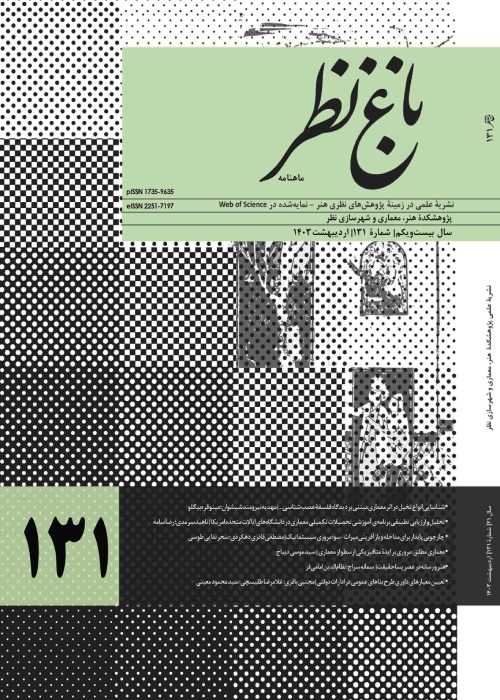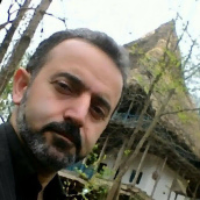Construction, Validity and Customization of Questionnaire about Role of Design in People's Participation in Regenerating Derelict and Inefficient Texture in Iran (The case study: Sirius quarter in Tehran)
Author(s):
Abstract:
The aim of this article is to promote the application of a questionnaire which has been specifically designed to study the role of design in people’s participation in regenerating derelict and inefficient texture. This questionnaire contains 70 questions that can be asked individually and in groups. Although it does not any have time limitations but the necessary time to answer the questions is from 20 to 30 minute. Different methods were used to validate and customize it. First، all responses were analyzed and discrimination coefficient and loop method were calculated for each response. Responses 38، 42، 47، 52، 69 and 75 were excluded of questionnaires due to inappropriateness and the rest of responses for the questionnaire were considered appropriate. According to the results of factor analysis، sixteen factors were identified of which only eleven were significant and others could not be named. It can be generally said that the whole design of the questionnaire measures the success of renewal for public participation in the design pattern. In the present article، the method to analyze factors is principal components method. In this method، load factor (equity factors) is used to extract factors. To ensure proper selection and factors extraction، Scree diagram was used. This diagram chart also showed that the number of efficient factors for rotation is eleven. One to 11 factors obtained more uniform distribution after rotation of the 11 factors with varimax (orthogonal) load factor method. The total explained variance after rotation showed that these factors are considered as major factors. Then questions about mentioned factors are determined and mentioned factors were interpreted according to common question contents about each factor. Thus، the corresponding mean of each statistical factor with design variables، public participation and renewal were identified. In the current studies، the first factor “the public participation in preparation of design” is confirmed and found to be consistent with perception and scientific findings of Oosthuizen (1377)، Dryskl (2002)، Habib and Rezvani (1384). The second factor، “streets figure” and the fifth factor “traffic priority” that were determined as a factor by people are found to be consistent with the views and findings of Jacobs (1967) and Moheb Ali (2009). The third factor “aggregation of pats for renewal” is confirmed and found to be consistent with the scientific findings of Adibzadeh (1388). In this study، the fourth factor i. e. “preserving the precious monuments” that was determined as a factor by people was eliminated in the confirmatory factor analysis step because of disruption of reliability. In the current studies، the sixth and seventh factors i. e. “changing necessity” of changes” and” renewal necessity” are confirmed and found to be consistent with the scientific findings and received of Grava (2003). In the current studies، the eighth factor i. e. “renovation by government” is confirmed and found to be consistent with the scientific findings and received of Izadi (2009) and Abaszadegan (2009). The ninth and tenth factors i. e. “creating small service locations” and “creating coherent service locations” that generally are considered services factor in the texture are confirmed and found to be consistent with the scientific findings and received of Grava (2003) and Izadi (2009). In this study، the eleventh factor i. e. “the strength of materials and beauty of construction” that was determined as a factor by people was eliminated in the confirmatory factor analysis step because of disruption of questionnaire reliability. A primary question was that: Does the questionnaire which has been specifically prepared to draw people’s participation in the process of regenerating derelict and inefficient texture of Iran (sample of Tehran Sirius neighborhood residents) have validity for the neighborhood residents? The analysis of statistical findings in this questionnaire showed that this questionnaire has good validity for the mentioned statistical society. Another question is that: Does the questionnaire which has been specifically prepared to draw people’s participation in the process of regenerating derelict and inefficient textures of Iran (sample of Tehran Sirius neighborhood residents) have reliability for the neighborhood residents? Analysis of statistics found that the “participation design” has high degree of reliability (i. e. α=961/0) in the population study. It can be generally concluded that this questionnaire has good reliability and validity. Furthermore، received factors from factor analysis can measure the design role in regenerating derelict and inefficient texture well. In other words، by considering people’s comments on the operating model design introduced in this study one can measure the role of people’s agreement and ultimately it should be said that the findings of the present study are the first findings on this case and also researchers know that more extensive studies should be carried out.
Keywords:
Language:
Persian
Published:
Bagh-e Nazar, Volume:9 Issue: 20, 2012
Page:
63
https://magiran.com/p1005959
دانلود و مطالعه متن این مقاله با یکی از روشهای زیر امکان پذیر است:
اشتراک شخصی
با عضویت و پرداخت آنلاین حق اشتراک یکساله به مبلغ 1,390,000ريال میتوانید 70 عنوان مطلب دانلود کنید!
اشتراک سازمانی
به کتابخانه دانشگاه یا محل کار خود پیشنهاد کنید تا اشتراک سازمانی این پایگاه را برای دسترسی نامحدود همه کاربران به متن مطالب تهیه نمایند!
توجه!
- حق عضویت دریافتی صرف حمایت از نشریات عضو و نگهداری، تکمیل و توسعه مگیران میشود.
- پرداخت حق اشتراک و دانلود مقالات اجازه بازنشر آن در سایر رسانههای چاپی و دیجیتال را به کاربر نمیدهد.
In order to view content subscription is required
Personal subscription
Subscribe magiran.com for 70 € euros via PayPal and download 70 articles during a year.
Organization subscription
Please contact us to subscribe your university or library for unlimited access!



